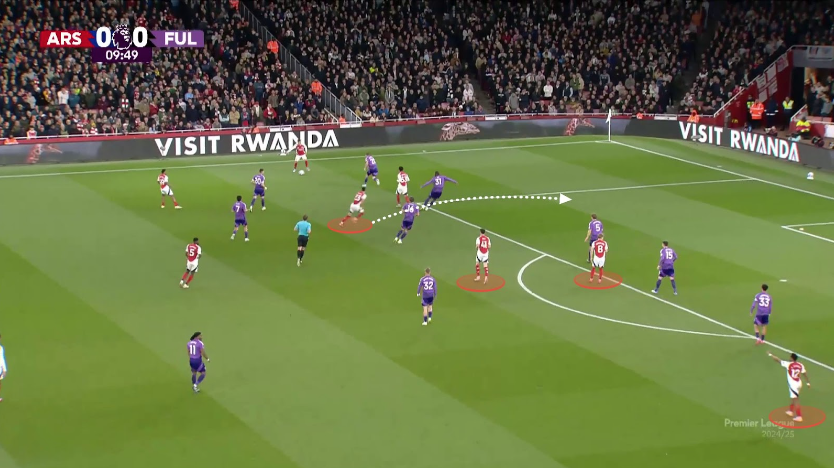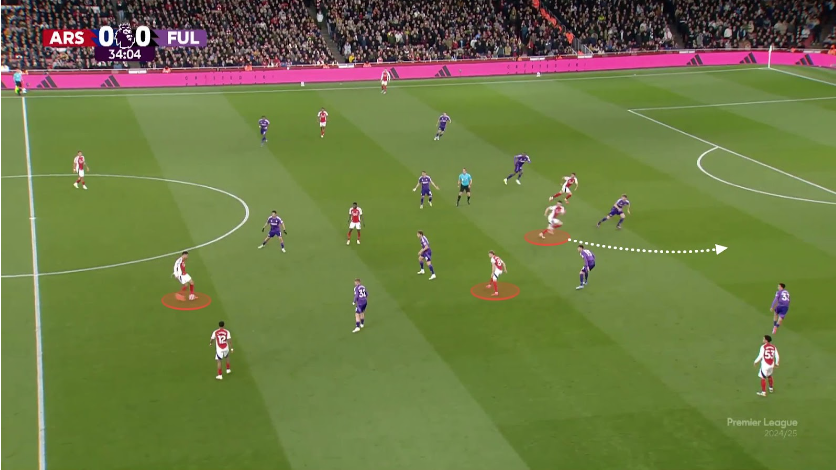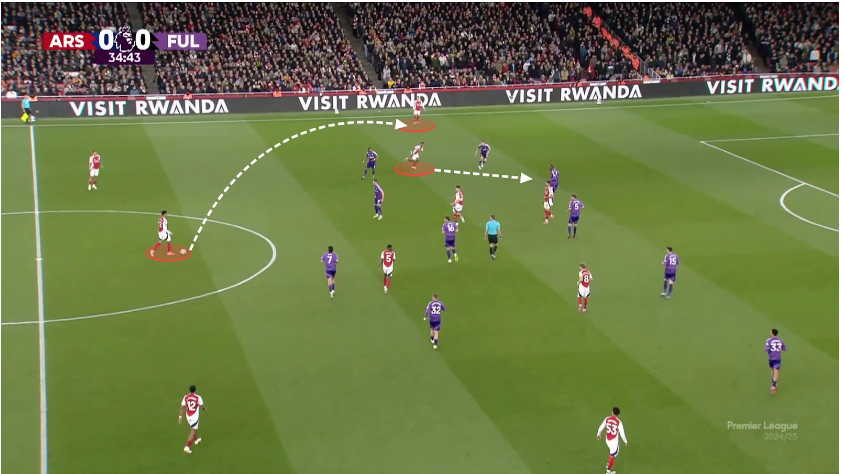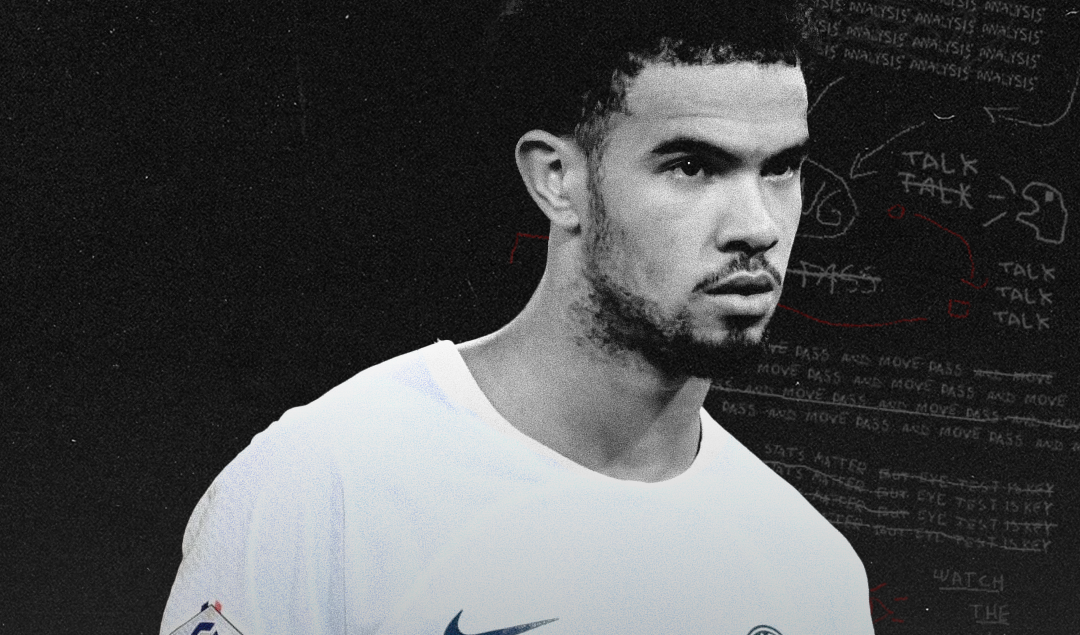Arsenal vs PSG: A Study of Tactical Flexibility, Structure, and Exploitation
The first leg between Arsenal and Paris Saint-Germain promises to be a high-stakes chess match where every small movement could tilt the balance of power. Mikel Arteta’s Arsenal arrive as a machine of positional precision, thriving on structured build-up, spatial manipulation, and collective pressing mechanisms. PSG, under the ever-adaptive Luis Enrique, offer a starkly different danger — an unpredictable force built on fluidity, rotational freedom, and transitional chaos.
Both sides are masters at bending games to their will, but with different weapons: Arsenal through tactical discipline and measured control, PSG through rapid verticality and intelligent exploitation of spaces. Enrique will look to destabilize Arsenal’s structure, while Arteta will aim to suffocate PSG’s flair.
With the injury to Kai Havertz forcing Arsenal into adjustments — and with PSG’s attacking carousel revolving around Ousmane Dembélé’s false nine movements — the nuances of the managers’ tactical responses could define not just the match, but the entire tie.
Arsenal Tactical Overview
Shape and Flexibility
Arsenal typically operate in a 4-3-3 structure, but Arteta demands fluidity across phases. In build-up, the system often morphs into a back three, with the full-backs — notably Myles Lewis-Skelly or Jurriën Timber — tucking inside. This allows Declan Rice and Martin Ødegaard to advance into aggressive half-spaces. Against Real Madrid, this adaptability disrupted Madrid’s press early and provided Arsenal with control through the middle.
Out of possession, Arsenal press in a coordinated upper mid-block, with Ødegaard and Bukayo Saka triggering pressure. Arteta can switch to a 4-2-3-1 or even a double pivot depending on the state of play, but the foundation remains rooted in a 4-3-3 across all phases.
Why PSG are Vying for their First Champions League Title under Luis Enrique
Build-Up Mechanics
In possession, Arsenal seek rapid verticality. The centre-backs — William Saliba, Jakub Kiwior, and Timber — are comfortable playing line-breaking passes. Lewis-Skelly’s tendency to invert alongside Thomas Partey establishes a double pivot, freeing Rice to attack space ahead.
This rotational midfield overloads central zones, dragging the opposition’s shape apart and creating space for switches to the wings. Against Real Madrid, Arsenal exploited these rotations to access Gabriel Martinelli and Saka in the half-spaces.
Final Third Dynamics
Arsenal’s attacking structure prioritizes wide overloads and isolations. Ødegaard is crucial in linking midfield to wide zones, feeding runners like Martinelli and Saka. On the left, Martinelli aggressively attacked his full-back, delivering crosses for midfield runners. On the right, Saka’s delayed wide positioning pulled defenders before cutting inside onto his stronger foot.
Late runs from Rice and Ødegaard into the penalty area supplement the wide threats, providing an extra dimension that overwhelmed Real’s defensive structure. Here are some actions from their game against Fulham which demonstrate their strategy:

Mikel Merino, playing as the central striker, shifts away from his central position to create an overload on the left flank

Rice, operating as the left-sided #8, moves across to the right flank to create an overload — Ødegaard drops deeper to pull his marker away, opening up space for Rice to attack.

Moments later, due to Rice shifting from the left to the right side, Arsenal develop a new dynamic on their left wing. They switch play across the pitch and manage to isolate Martinelli in a 1v1 situation.
Transition, Pressing, and Set Pieces
Arsenal’s athleticism and pressing intensity are among their greatest weapons. Their work rate — covering 113.9km vs Real Madrid’s 101.2km — suffocates opposition progression. In transition, Rice and Ødegaard excel at turning recoveries into immediate forward momentum. Set pieces have become an additional strength, with Rice’s recent free-kick goals and consistent aerial threats from Saliba and Kiwior posing constant danger.
PSG Tactical Overview
In order to preview PSG’s approach, let’s take a look at their recent match-up against newly crowned English champions Liverpool. So, PSG initially struggled against Liverpool’s aggressive 4-2-4 press, finding themselves pinned deep and unable to build effectively. Early attempts to solve this — including Vitinha dropping next to Gianluigi Donnarumma during goal kicks — proved ineffective, as Liverpool’s man-oriented press continued to force errors.
Luis Enrique’s critical adjustment came when Vitinha returned to midfield, and the back four were tasked with progressing play themselves. Simultaneously, Dembélé began dropping deeper into midfield areas, effectively acting as a false nine. This gave PSG a 4v3 advantage centrally, unsettling Liverpool’s press.
Dembélé’s deeper positioning allowed him to receive between the lines and launch quick wide attacks. His movement forced Liverpool to tweak their pressing shape, with Dominik Szoboszlai dropping deeper and the front line becoming more selective. Yet PSG continued to find wide progression, particularly down the right side with Achraf Hakimi and Nuno Mendes.
Higher up the pitch, PSG showed fluid positional rotations, sometimes morphing into a back three to stabilize possession. Dembélé’s ability to draw central defenders out of position, combined with Bradley Barcola and Khvicha Kvaratskhelia’s intelligent wide rotations, created consistent problems for Liverpool’s defensive line. Despite controlling large spells, PSG struggled to convert their territorial dominance into goals during regular time. Now let’s go back to the basics.
Structure and Positional Fluidity
Luis Enrique’s PSG nominally deploy a 4-3-3, but phase transitions reveal much greater complexity. In possession, the shape often becomes a 3-2-5. Vitinha drops into the back line, allowing Hakimi and Mendes to advance into wide attacking positions.
Offensively, the forward line is highly interchangeable. Dembélé often functions as a false nine, drifting wide to combine with Barcola, while João Neves and Warren Zaïre-Emery maintain fluid midfield rotations. Without the ball, PSG press high in a 4-3-3 block, relying on the technical quality of every player to sustain pressure even under counter-attack conditions.
Build-Up Strategy
PSG’s build-up play emphasizes methodical possession and vertical progression. Vitinha’s movement into the backline enables full-backs to advance, creating constant wide overloads. Passing patterns often see short exchanges through midfield before sudden diagonal switches to stretch the opposition’s shape.
Neves, in particular, looks to break defensive lines with lofted passes into the channels, setting wide players into advantageous positions.
Final Third Play
In the final third, PSG seek to manufacture overloads through constant movement and third-man combinations. Dembélé’s wide drifting and Barcola’s inside runs create unpredictable angles.
Hakimi and Mendes’s advanced roles offer width, allowing the front three to operate narrowly at times. The aim is to manipulate the defensive line through overlapping full-backs and quick interchanges, often culminating in cutbacks or low crosses from wide areas.
Transition, Pressing, and Set Pieces
PSG’s ability to win the ball high and transition instantly is a hallmark of Enrique’s philosophy. Vitinha and Neves swarm ball-carriers aggressively. Upon regaining possession, PSG immediately seek verticality through dribbles or progressive passing. Their high pressing caused Aston Villa’s structure to collapse repeatedly.
On set pieces, PSG are dangerous via Marquinhos and Fabian Ruiz, though their primary strength remains their in-possession rhythm and ability to dominate territorial control.
Tactical Chess Match: Arteta vs Enrique
The duel between Arteta and Enrique will center around two visions of control. Arteta will seek to impose settled possession phases, dominate field position, and suffocate PSG transitions with an aggressive counterpress. Merino’s drifting movements and Rice’s flexible positioning could prove key in disorganizing PSG’s defensive structure.
On the other side, Enrique will likely aim to create chaos: encouraging Dembélé to drop into pockets, drawing Arsenal’s press forward, and then releasing quick wide attacks. PSG’s ability to exploit isolated matchups — particularly on Arsenal’s flanks — could decide the flow of transitions.
For Arsenal, controlling the rhythm and minimizing transitional chaos will be essential. For PSG, unsettling Arsenal’s midfield structure and creating moments of direct threat could tip the scales. Whichever coach succeeds in asserting their rhythm early could dictate the narrative of the first leg.
The Four Best Players to Play for Both Arsenal and Tottenham
Conclusion
This first leg promises to be a fascinating tactical chess match between two managers who approach control in fundamentally different ways. Arteta’s Arsenal will look to dominate the ball, structure the field, and suffocate PSG transitions through collective pressing and fluid positional play. Meanwhile, Enrique’s PSG will aim to disrupt Arsenal’s rhythm, leveraging Dembélé’s false nine movements and wide rotations to manufacture chaos and exploit any momentary disorganization.
The margins will be fine. If Arsenal can stabilize their midfield and transition defense, they will have the platform to pin PSG deep and create sustained pressure. If PSG can bypass Arsenal’s press and find their wingers in isolation — or pull Arsenal’s center-backs into uncomfortable decisions — they could turn the tie on its head with sudden bursts of quality.
In a battle where control versus chaos defines the narrative, the side that adapts quicker and imposes its rhythm will likely take a crucial advantage into the second leg.
By: Shawal Hossain / @itadorinotyuji
Featured Image: @GabFoligno / ANP – Getty Images
